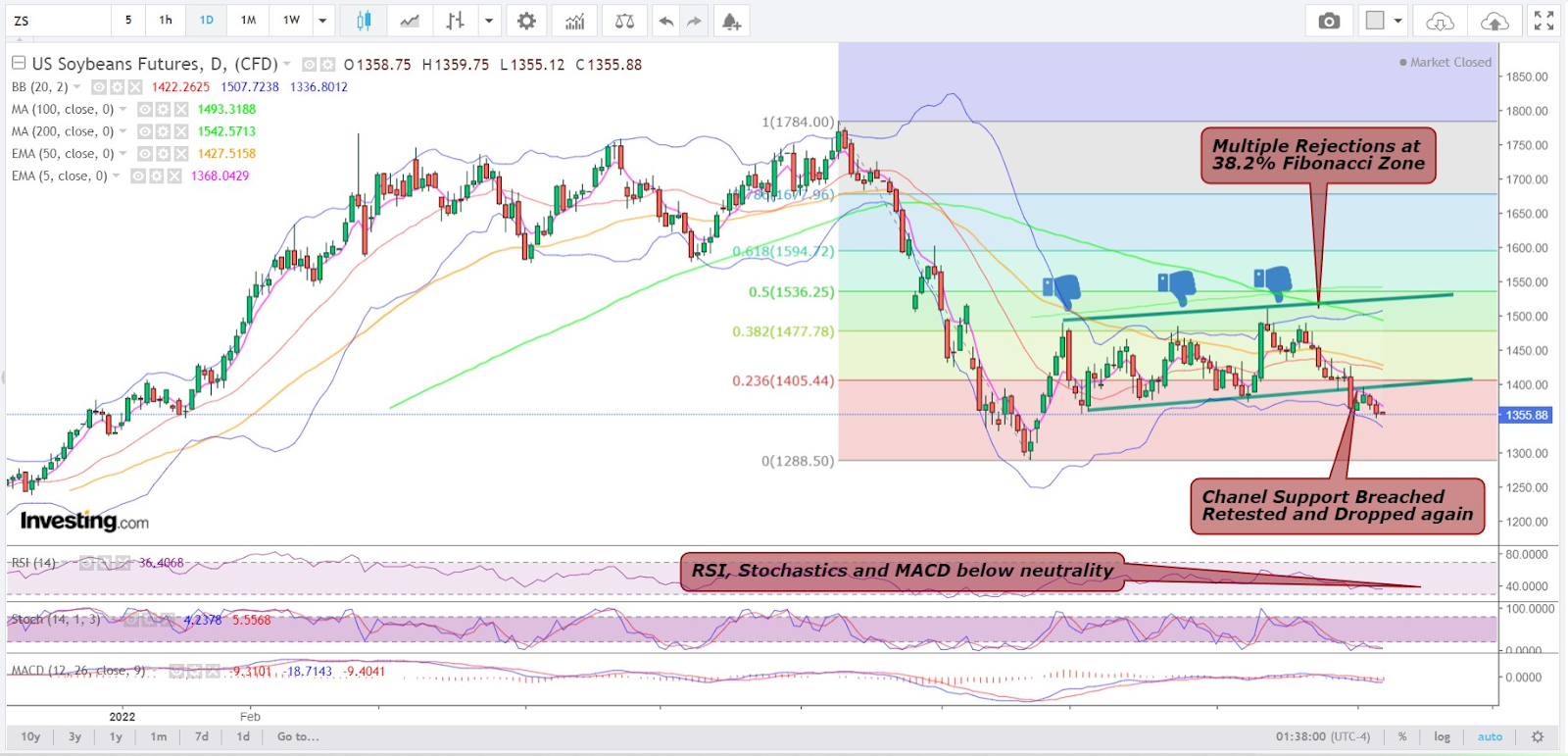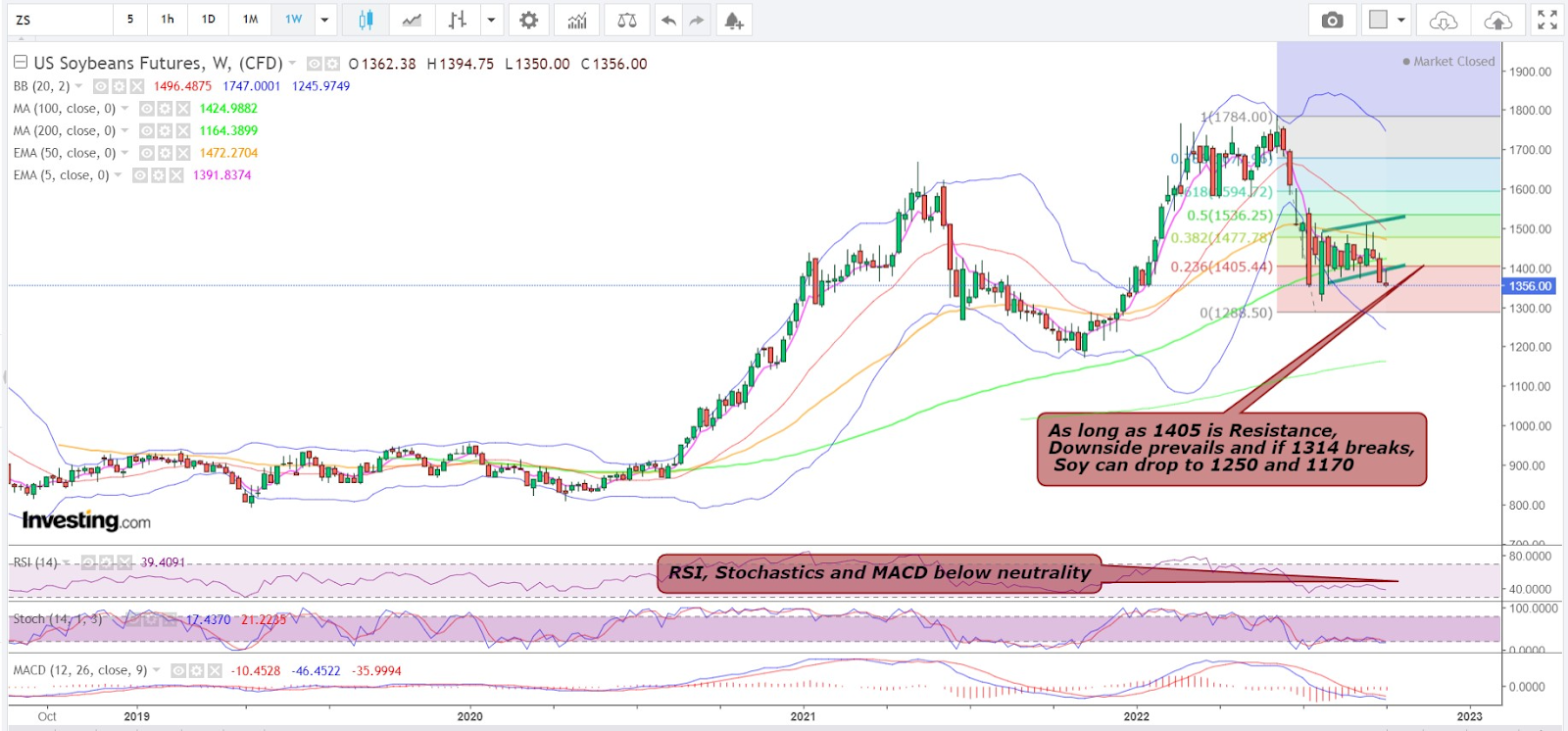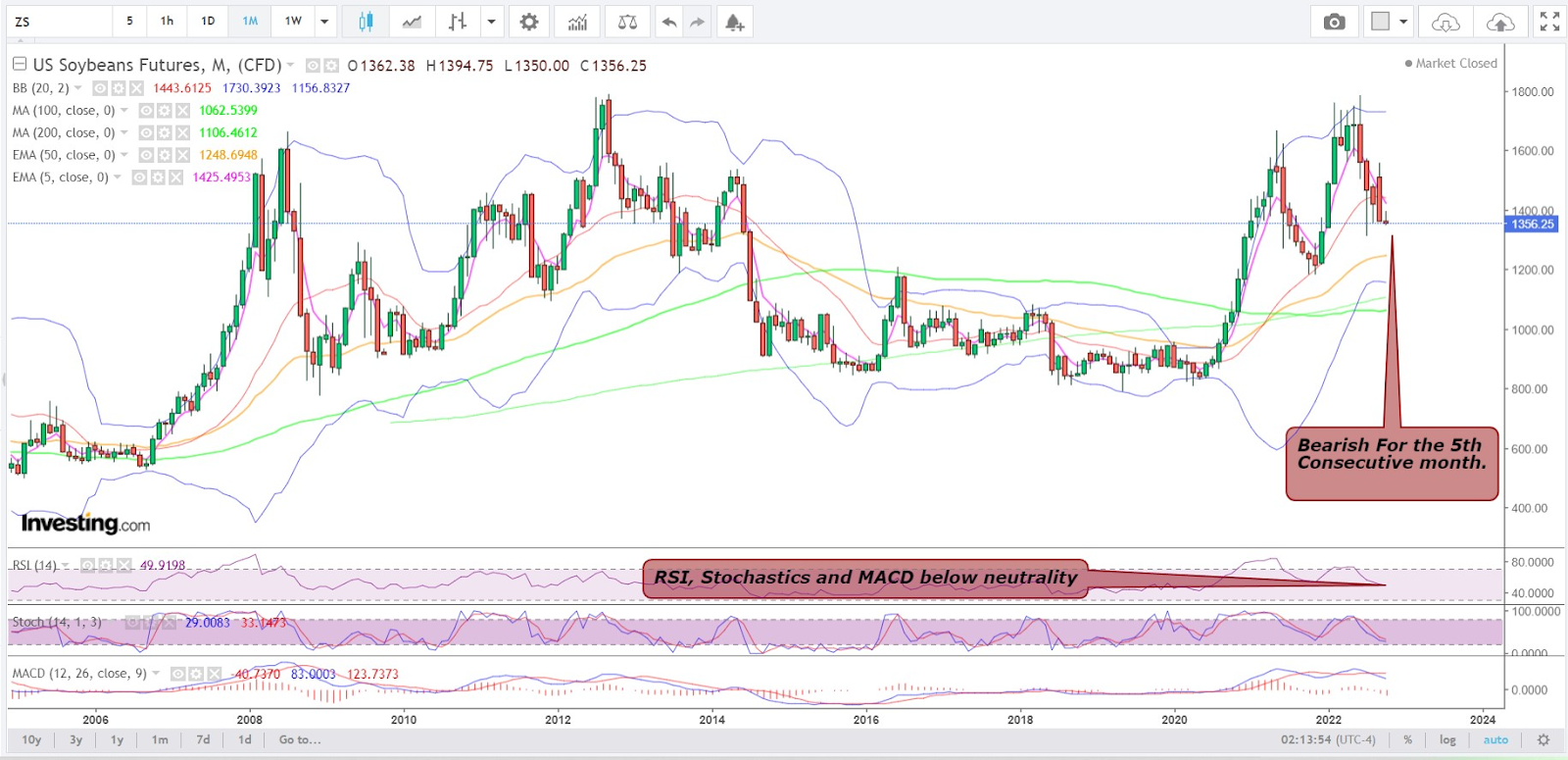Soybeans Could Plunge To Under $12 After ‘Nail-In-Coffin’ Report By USDA
2022.10.07 06:11
[ad_1]
- After woeful summer, grim times haven’t ended for soybean longs
- Super-bearish crop report at end of September may seal market’s doom
- USDA projects soybean inventory of 274 million bushels
- Market could drop to $11.70, charts show; flip side rebound could hit $14.77
bulls have few places to hide.
After a woeful summer, grim times haven’t ended for longs in the trade, with October shaping to be their fifth straight month in the red.
Reason: A super-bearish crop report for the end of September by the US Department of Agriculture (USDA) which, traders say, might have put the proverbial nail into the coffin of the market.
Soybean futures on the Chicago Board of Trade fell its most in 1½ months, losing 3.3% after the report surfaced on Sept. 30.

Charts by SKCharting.com, with data powered by Investing.com
The USDA projected a soybean inventory of 274 million bushels versus a trade forecast of 242 million bushels. That compared with the 971 million bushels seen on June 1 and 257 million bushels on Sept. 1, 2021.
As AgWeb noted in its roundup of the USDA report, the narrative prior to the report was an obvious shortage of soybeans. However, the report showed more soybeans than the trade expected.
As a result, soybeans posted their biggest loss since a 4.3% drop on Aug. 1, Jerry Gulke, president at grains trading house Gulke Group, said in the AgWeb roundup. He adds:
“What changed? We increased the stocks, which will increase the carry-in for next year. Those extra bushels get us [into] a problem area, when we are still trying to figure out how much demand destruction has occurred.”
Last Friday’s close of $13.64 per bushel for soybeans, Gulke says, put the nail in the coffin basically for the soybean price outlook.
“The good news is we’re still trading over $13 on beans out of the field,” he says.
“Even for 2023, there are over $13. I think the market still has some kind of a weather premium built in on a potential crop problem in Brazil again or what if we can’t grow enough soybeans in the US again?”
Jack Scoville, chief crop analyst at Chicago brokerage PRICE Futures Group, also suggested international problems may be weighing on soybeans beyond the US crop.
“Brazil is still offering beans and South America as a whole is expected to produce a very big crop later this year for harvest next spring,” Scoville said, adding that the La Niña weather phenomenon could cut some production potential.
“US production ideas remain strong after mostly good weather in August and September. Harvest weather is cool and clear for most of the Midwest at this time. Basis levels are still strong in the Midwest. There are still renewed Chinese lockdowns and there are fears that China has been importing less as a result.”
The situation in soybeans now could not be more at stark to where the trade stood eight months ago.
Back in early February, soybeans had rallied in 12 out of 16 weeks as hit 8-year highs of $90 a barrel and most commodities surged as well from Russia’s invasion of Ukraine. was, meanwhile, raging at 40-year highs.
The current situation prompts Gulke to question what would get soybeans back to its February peak of $17.59.
“The problem is now we’re in a position where we need to have a problem somewhere to see the light of day of $15 to $17 in beans again,” he adds.

For now, soybean futures remain in the vice grip of bears and could even drop to under $12, said Sunil Kumar Dixit, chief technical strategist at SKCharting.com.
“The price outlook remains bearish,” said Dixit.
He said the Relative Strength Index, Stochastics and Moving Average Convergence Divergence across the daily, weekly and monthly time frames all indicated negativity.
The 5-month Exponential Moving Average of $1.425 crossing below the monthly middle Bollinger Band of $14.43 was in itself a bearish affirmation, he said.
The daily chart shows multiple rejections at the 38.2% Fibonacci retracement of the $17.84 – $12.88 drop.
Prices have also breached channel support and dropped after a retest, Dixit added.

“As long as $14.05 is resistance, downside prevails for a retest of the swing low to $13.14, which is the acceleration point for a further drop to $12.50 and $11.70.”
On the flip side, a sustained break above $14.05 will open the way for recovery towards $14.77, Dixit added.
Disclaimer: Barani Krishnan uses a range of views outside his own to bring diversity to his analysis of any market. For neutrality, he sometimes presents contrarian views and market variables. He does not hold a position in the commodities and securities he writes about.
[ad_2]
Source link








